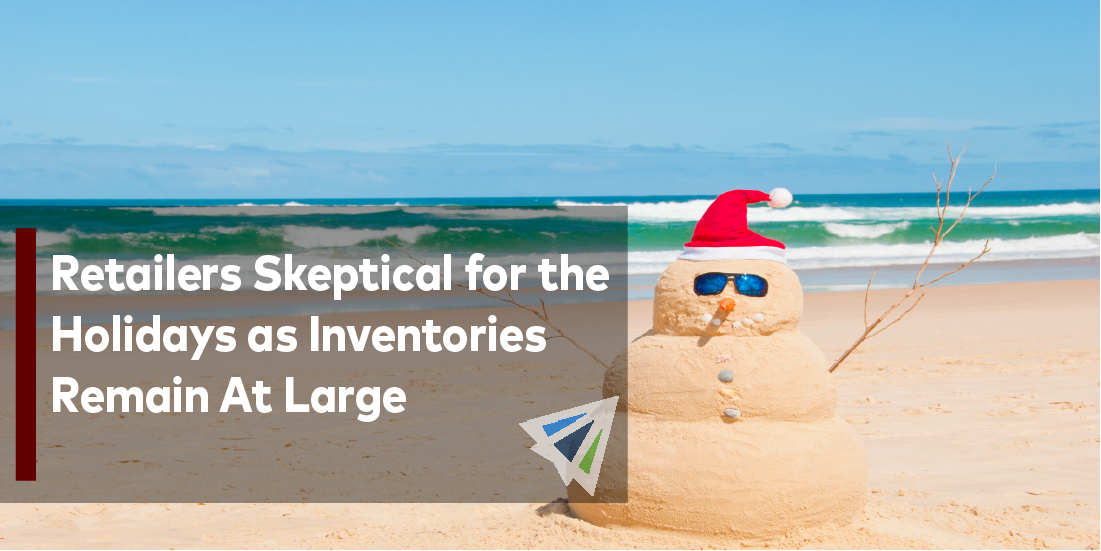Only retailers talk about Christmas lights in the dog days of summer. That’s the beauty of logistics and how the process of getting products demanded by consumers during the fall and winter holidays begins just as kids are being let out of school for summer vacation.
Of course, there was no seasonality to freight movement from 2020 to 2022, however this year, things are feeling a lot more traditional.
Retailers are expected to move in whatever cargo they need for the holiday season around late summer and early fall, just like the good old days.
While this timeline appears certain, the real question still remains—how much cargo will retailers bring in for the holidays?
Despite economic indicators, retailers are still skeptical
Any answer to that question has to consider the behavior and demand from American consumers—the likes of which have been hard reads given uncertain economic indicators and an abundance of supply (retail inventory) carrying over from 2022.
At the beginning of the year, inflation was the bogeyman—the wildcard that could throw a wrench into any hopes of a strong performance for retail in 2023.
However, as we approach the second half, inflation-mongers have been far, fewer, and quieter as the economic threat appears down significantly. The stock market is looking like its strongest in more than a year while retail sales have more pep in their step than expected.
This is sure all great news, especially considering how doomsday some were at the start of 2023, but retailers are reportedly still skeptical for this year’s holiday season. Courtesy of surveying done by CNBC, retail anticipates modest spending this holiday season.
Bloated inventories stunt retailer’s ordering
CNBC’s Supply Chain Survey, which includes respondents from large retail groups, such as the National Retail Federation and United National Consumer Suppliers, reveals retailers are likely to bring in less when lining up orders for the holidays.
Of the surveyed respondents, 43 percent foresee ordering less this year as opposed to last year, while 26 percent plan on bringing in the same amount of product.
While inflation concerns aren’t fully tempered, the main reasoning retailers will point to is their lingering inventory from a wild 2022.
In fact, it’s not surprising that nearly half of those surveyed would identify with ordering less since last year was the highest historically by almost any measure for imports.
That said, this egregious amount of ordering left an inventory hangover in 2023. Six months already in, many retailers are still coping with an excessive amount of product on shelves and in warehouses.
In particular, unseasonable items have been a problem for certain sects of retail, like footwear. Because, who’s going to buy Birkenstock sandals for a winter blizzard or Ugg boots during a summer heatwave?
“Cleary, inventory…remain top of mind for apparel and footwear executives as we enter peak shipping season,” said Stephen Lamar, president and CEO of the American Apparel & Footwear Association told CNBC. The AAFA was also a respondent to the survey.
The holiday season of discounts?
Since inventories remain bloated for a lot of retailers, many of them have considered alternative strategies come this holiday season.
Instead of shooting the moon again with ordering, they can leverage their excess deposits of product onto consumers by way of discount. While it sacrifices profit, the strategy could shed retailers of their inventory faster.
In other words, this appears to be a long-term process. Let this year’s holiday season be the year of bargain-hunting for consumers while retailers can balance out their supply chains once more and reset for a more regular 2024.
Final Thoughts
At the end of the day, discounts can bring more shoppers to storefronts. While inflation-fears have somewhat eased, consumers are no doubt mindful of their spending habits given that the economy is not completely immune to such a threat.
Paying less is a timeless way of hooking people to buy a product. People like to spend and may make additional (non-discounted) purchases as well.
Not to get too far ahead, but if the discounted Lululemon leggings you gifted to your grandma for Christmas are a favorite of hers, maybe she’s a converted customer for the brand come 2024.
Please contact our team for more information about this topic or others. Additionally, refer to our weekly Competitive Edge newsletter for industry news, market updates, and more!
